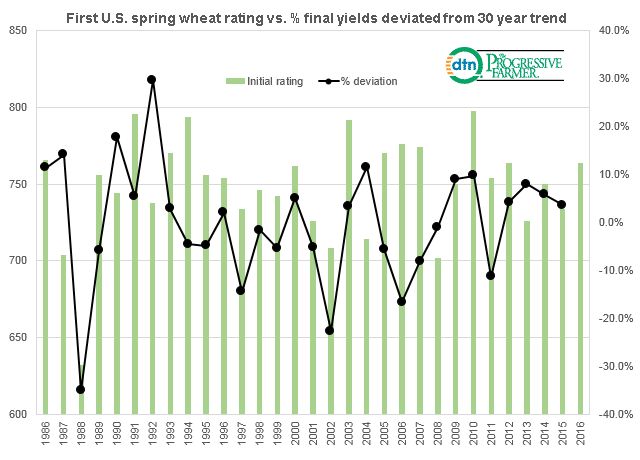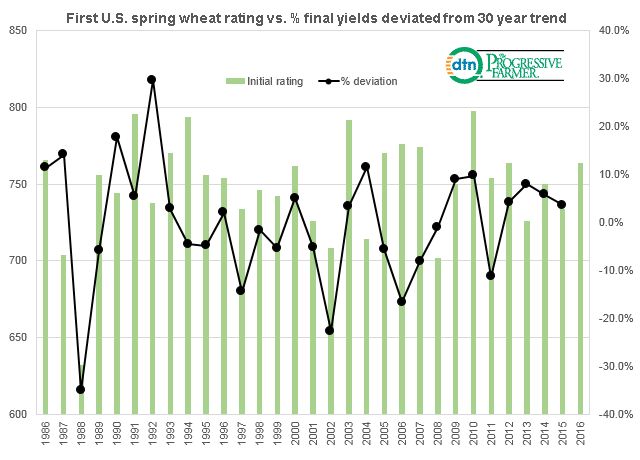Fundamentally Speaking
Good Start to U.S. 2016 Spring Wheat Crop
Pity the poor wheat market, looking over jealously as soybeans, soybean meal and to a lesser extent corn engage in buoyant price rallies while wheat remains close to not only contract but ten year lows.
The recently released May WASDE report projected global wheat production this year at 727 million metric tons, down slightly from last year's record but still the highest total ever.
2016/17 global ending stocks are projected to reach a new record of 257 million tons, up 14.4 million tons from last year with the stock to use ratio the highest since the 1998/99 season.
P[L1] D[0x0] M[300x250] OOP[F] ADUNIT[] T[]
Here in the U.S., weather conditions in much of the Central and Southern Plains has been quite good resulting in a bountiful hard red winter wheat crop with the fortunes of the soft red winter crop a little less favorable due to excess moisture.
Meanwhile, the USDA released the first 2016 U.S. spring wheat crop ratings this week and using our usual ratings system (where we weight the crop based on the percent in each category and assign that category a factor of 2 for very poor, 4 for poor, 6 for fair, 8 for good, and 10 for excellent and then sum the results), this year's initial spring wheat rating is 764 which ties 2012 as the best start for a crop since 2010 when the first condition report showed a rating of 798.
The accompanying graphic shows the first crop rating of the year for U.S. spring wheat going back to 1986 vs. the percent that the final yield deviated from the 30 year trend.
The very good initial crop rating may not have much relevance for final yields as the key part of the growing season is still ahead and the correlation between the first crop ratings of the year and the percent that final yields deviate from the 30 year trend is a mere 31.5%.
What is favorable is the crop was able to get seeded on a timely basis this year as opposed to recent seasons and while the oilseeds complex is fearful of adverse weather this summer due to La Nina, the spring wheat crop should be able to get through its critical heading period earlier in the summer when conditions are supposed to be more stress free.
(KA)
© Copyright 2016 DTN/The Progressive Farmer. All rights reserved.






Comments
To comment, please Log In or Join our Community .